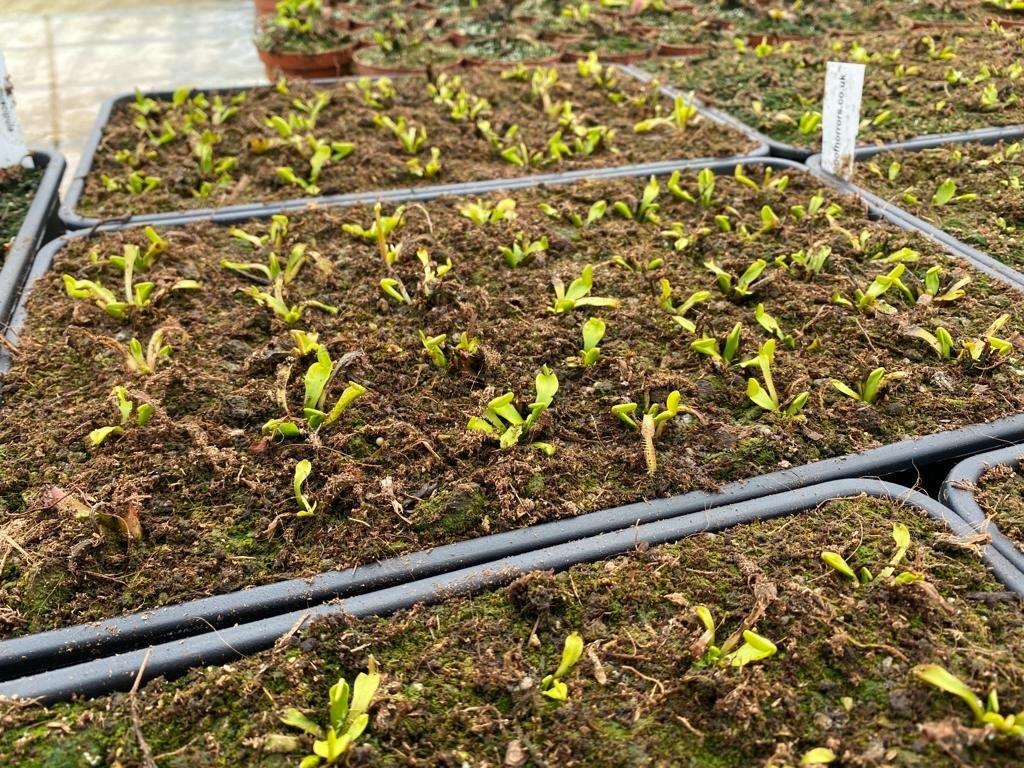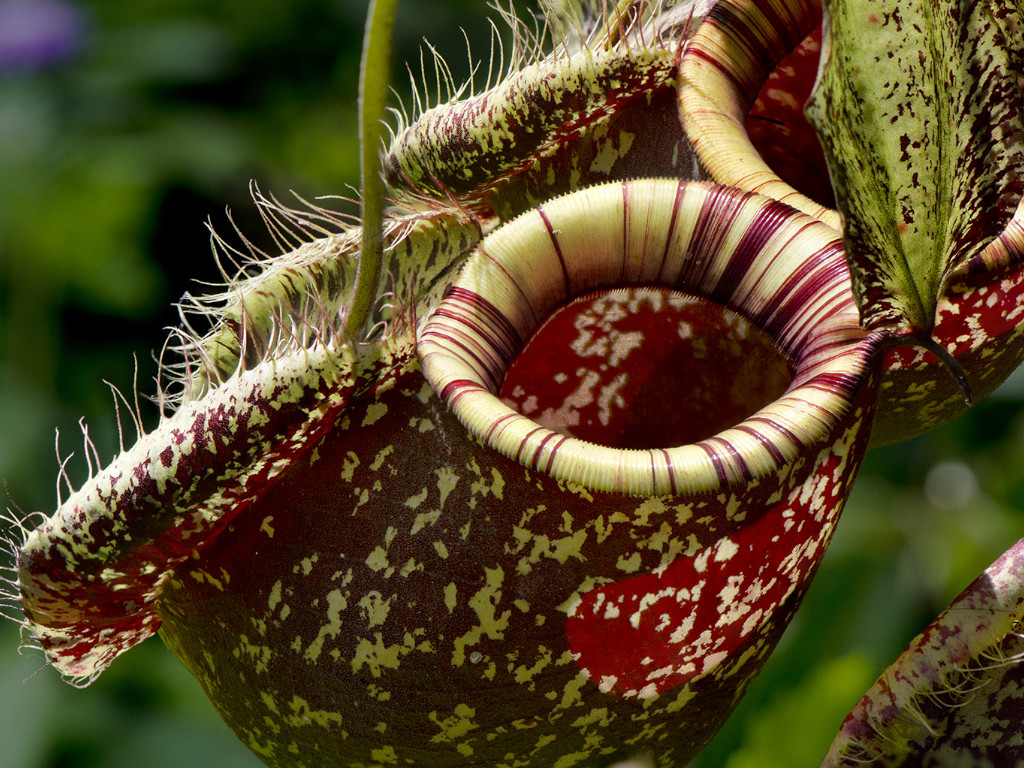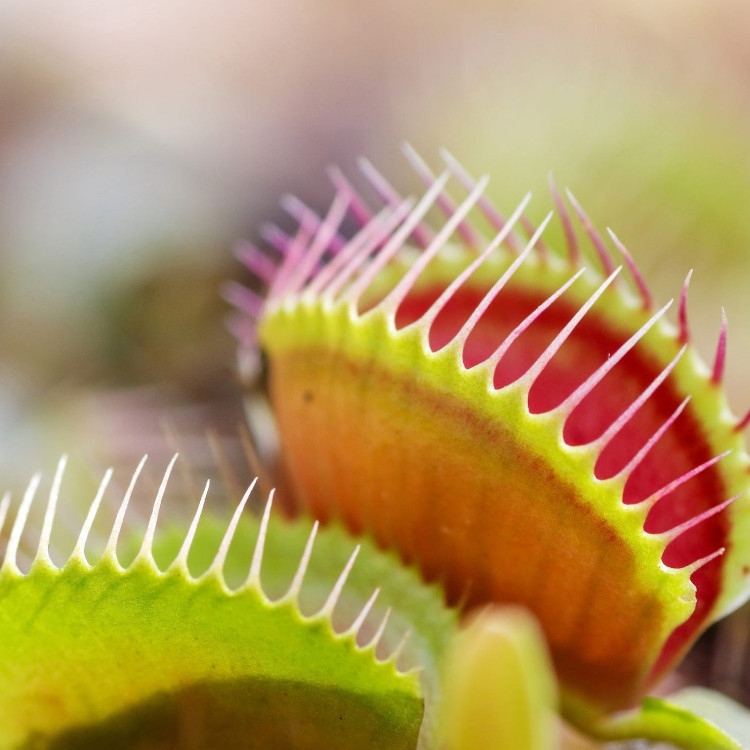Welcome to South West Carnivorous Plants.
Winners of 7 Golden Medals at RHS Chelsea Flower Show.

Product range.
Littleshopofhorrors.co.uk is the online store of South West Carnivorous Plants based in Devon UK.
We have been growing carnivorous plants since 1990 and specialise in hardy carnivorous plants including Venus Flytrap (Dionaea muscipula), North American Trumpet Pitcher Plants (Sarracenia), Sundews (Drosera) and Cobra Lily (Darlingtonia), Bladderworts (Utricularia) and more.
Our care guides and tutorial videos will help you get the most from your carnivorous plants, wherever you grow them.
Blog.
Carnivorous Plants
Are you looking for an exciting and fascinating plant? Then a carnivorous plant might be something for you! Did you know that carnivorous plants evolved in such a way that they do not use soil as a source of nutrition, but insects?
Insect-eating plants
Carnivorous plants are true carnivores and eat all kinds of insects. In nature, carnivorous plants grow in swampy areas and jungles. These areas have nutrient-less soil, meaning there is no nutrition in the soil. Because of this, the carnivorous plant family has evolved to survive by luring insects. Carnivorous plants can be found all over the world. In every shape and size, and each species has a different appearance and a different lure method. Carnivorous plants are used indoors as natural fly control, or outdoors in a bog garden for example. We also offer various outdoor carnivorous plants that will thrive well in the UK.
The Traps
Each species within the carnivorous plant family has a different baiting method. Below you will find a quick overview of the various type of traps.
The ‘Clap’ trap
This trap is used by the best-known carnivorous plant, the Venus Flytrap. The Venus Flytrap (Dionaea muscipula) is the only plant species that can count. The fly trap manifests itself in the shape of a mouth. In this mouth there are three to nine hairs. When an insect lands in this trap and touches one of these hairs – twice – within 20 seconds, the trap closes. The plant has successfully caught the insect and the insect won’t break free from it.
The ‘Cup’ trap:
This trap is used by Nepenthes (Monkey Cup plant), amongst others. The cup has an attractive colour and produces an attractive smell that lures insects. When an insect enters the cup, it can not come out again. The cup contains enzymes that slowly digest the insect. We have various species of this spectacular Nepenthes for sale in the UK.
The ‘Trumpet’ trap:
Sarracenia (Trumpet Pitcher plant) and Darlingtonia californica (Cobra Lily) are characterized by this type of trap. This trap owes its name from its beautiful appearance. This trap resembles a trumpet. Similar to the cup trap, this trap produces an attractive liquid and beautiful colour that attracts insects. Inside the trap are small vertical slits that prevent the insect from escaping. At the bottom of the trap is a watery secretion that digests and converts the prey into food.
The ‘Sticky’ trap:
This trap is used by Drosera (Sundew) and Pinguicula (Butterwort), among others. The trap consists of a leaf covered with sticky droplets that smell delicious. This smell attracts insects. Once the insect lands on the trap, it sticks to it. The prey insect cannot move. These types are ideal for controlling fruit flies.
Care for Carnivorous Plants
Each carnivorous plant species needs its own care. Read more about comprehensive carnivorous plant care by species here. The general care of carnivorous plants will be described below.
Water
Preferably use rainwater, osmosis water or distilled water. Most carnivorous plant species need a lot of water. Read more about how much water each species needs on our general care page. Do not give carnivorous plants tap water. Because carnivorous plants cannot extract substances from the soil properly, it is difficult to separate the substances (which can cause roots to rot). As a result, the carnivorous plant absorbs all substances from the soil. The lime contained in tap water is bad for carnivorous plants and can cause lime build-up in the long term. Read more about watering carnivorous plants here.
Light
Carnivorous plants generally need a lot of sunlight. Lots of light gives them a beautiful colour and allows carnivorous plants to attract more insects. Read how much light each species needs on our downloadable care guides for carnivorous plants.
Soil
Carnivorous plants are on nutrient-less soil in nature. As a result, they need special carnivorous plant soil. Preferably do not use normal potting soil. Recommended: we sell the right carnivorous plant compost in our webshop.
Pruning
Traps of carnivorous plants die back, wither and make room for new traps. Old traps are best to be removed. Remove the traps carefully with clean secateurs without damaging the plant. Some carnivorous plants grow flowers. Flowering costs a lot of energy for a carnivorous plant. As a result, the traps will not grow quickly. For this reason, it is best to remove the flowers if traps don’t develop as they should (unless, of course, you find the flowers extra beautiful). The flowers of the Pinguicula are an exception to this. These flowers aim to attract more insects and can therefore continue to bloom nicely.
Repotting
During a year Carnivorous plants will have a growth and a dormancy period. The growth period starts in spring to autumn (around April to around August). During this period, it is best to repot carnivorous plants. Preferably use special carnivorous plant soil. You can also make your own compost mix with peat (maximum pH of 5), sphagnum moss, grit and perlite.
Need more information?
Would you like to learn more about carnivorous plants? Then have a look at our plant information and care blogs. Here we tell you more about carnivorous plants and your most frequently asked questions. Do you have a question that is not answered on our online shop? Please feel free to contact us. We are happy to help you.
Buy Carnivorous Plants
Would you like to buy your own carnivorous plant? In our online shop you can easily order your own carnivorous plants throughout the UK. Your order will contain care instructions for each plant variety to make sure your carnivorous plants will thrive for years.

Growing Your Own Carnivorous Plants
In this blogpost we’ll provide you with some tips and tricks to make sure your Carnivorous Plant seeds will have most success to grow into

How to care for Nepenthes?
Nepenthes is found in Jungles all over the world. This species likes a tropical climate, which is why it is best to keep Monkey Cup









